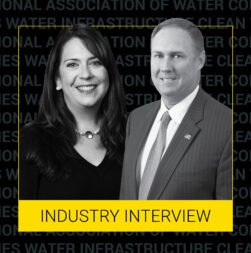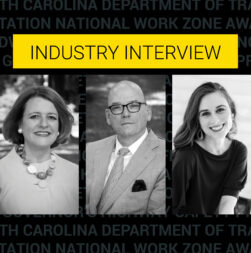As president CEO of the American Traffic Safety Services Association (ATSSA), Roger Wentz brings over 30 years of experience in the association’s governance, 19 of which are in his current role. ATSSA has been recognized for leading the way for legislative reform and funding advocacy for transportation safety on a national basis. Roger spoke with Flagger Force, a committed member of ATSSA, about the current and future state of the transportation industry.
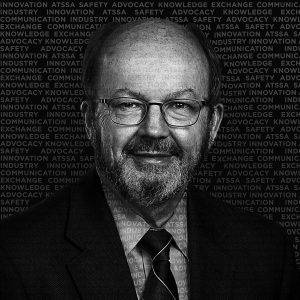
Flagger Force: Roger, we appreciate you taking the time to speak with us today about ATSSA and some of the challenges facing our industry. First, can you identify for us some of your strategic goals?
Roger Wentz: Upon joining ATSSA, even when I was first interviewed for my position, the passion that the association and board felt about work zone safety really stood out to me. Within the first year, we had to determine our primary focus within the transportation sector as an organization. One of our members of the ATSSA Foundation Board said something that really stood out to us: “You do well by doing good.” This simple phrase really inspired not only myself, but the rest of our team to make the decision to make roads safer. From there, we started out with three strategic goals: advocacy, knowledge exchange (with others in the industry specifically) and communication (keeping members informed of what we are doing). We have articulated our mission as advancing efforts “Toward Zero Deaths” in work zones.
Flagger Force: Have the goals changed over time? 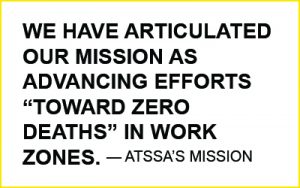
Roger Wentz: We haven’t removed any of our initial goals and will never lose our primary focus on safety, but we have added two additional goals, which are supporting our members’ business development needs and industry innovation. For instance, we are focused on building our knowledge and understanding of vehicle automation and how it will impact the industry.
Flagger Force: Your goals are vital for progress in the transportation and the traffic control industry. What are some of the challenges you face in pursuing those goals?
Roger Wentz: Yes, of course. We feel one of the keys to progress is to focus on advocacy. We have made great strides to improve our members’ presence in legislative offices of Capitol Hill. We are working to develop permanent funding for the Highway Trust Fund, which is where state departments of transportation entities receive the majority of their funding for infrastructure improvement. The funding mechanism for the federal transportation budget is primarily derived from fuel taxes. We are seeing a long-term trend in lower fuel consumption, which creates uncertainty for future funding. It is important for legislators to see and support the innovation that is going on with our members and how it positively effects the transportation industry, which in turn, saves lives.
Flagger Force: What are ATSSA’s views on how connected and automated vehicles will impact the future of the traffic control industry?
Roger Wentz: We are seeing a shift from driver-controlled to driverless vehicles, but it’s an evolution, and we are still early in the process. I’ll clarify that there are two major categories for this vehicle technology: connected and autonomous. We define “connected” as utilizing sensors or data to inform or warn the driver about their environment—for instance, collision alerts or smart breaking. In autonomous vehicles, technology replaces driver control. A prime example would be Google’s self-driving car project. Obviously this technology is moving ahead rapidly, which creates a great deal of uncertainty in our industry. A question we ask is how this technology will address anomalies in roadway environments such as work zones? For instance, there is technology called “platoons” where a designated lead vehicle controlled by a person leads autonomous following vehicles in a kind of convoy. The military is exploring this right now. What if the lead vehicle intrudes into a work zone? Will all the other vehicles follow right behind? These are real concerns for people operating in work zones. Therefore, ATSSA’s job is to stay on top of this kind of innovation and advocate for work zone safety.
Flagger Force: In what other ways is ATSSA seeing innovation in the transportation and traffic control industry?
Roger Wentz: There are several new technologies that have been discussed, especially during the ATSSA Expo held in January. One important trend was with “smart work zones,” where information is transmitted electronically to a receiver in a passing vehicle, alerting the driver about the work zone and potentially recommending an action such as reducing travel speed. This technology could also provide updates to the driver on the length delays or the kind of work that is being done in the work zone.
Flagger Force: National Work Zone Awareness Week (NWZAW) is in April
this year. For those who don’t know, can you tell us about it? 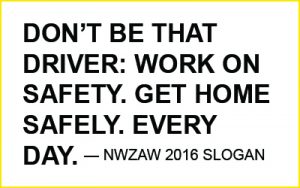
Roger Wentz: NWZAW is an effort to encourage safe driving through highway work zones. It also brings attention to everyday motorists that our roadways need to be properly and safely maintained. Real people risk their lives performing that work. This year’s event is going to be held April 11-15 with the slogan, “Don’t be THAT driver: Work on safety. Get home safely. Every day.” The key objective here is to combat distracted driving behavior. If there is one place that requires special attention, it would be a work zone.
Flagger Force: That is an important message to share with all motorists, and for those of us that operate in work zones, it’s critical to keeping everyone safe. What can people do to get involved in NWZAW?
Roger Wentz: This year we have designated April 13 as “Go Orange Day.” We are asking agencies and industry partners to urge their employees to wear something orange in support of NWZAW. We really want our members and supporters to make this a focus this year to increase national awareness for work zone safety.
